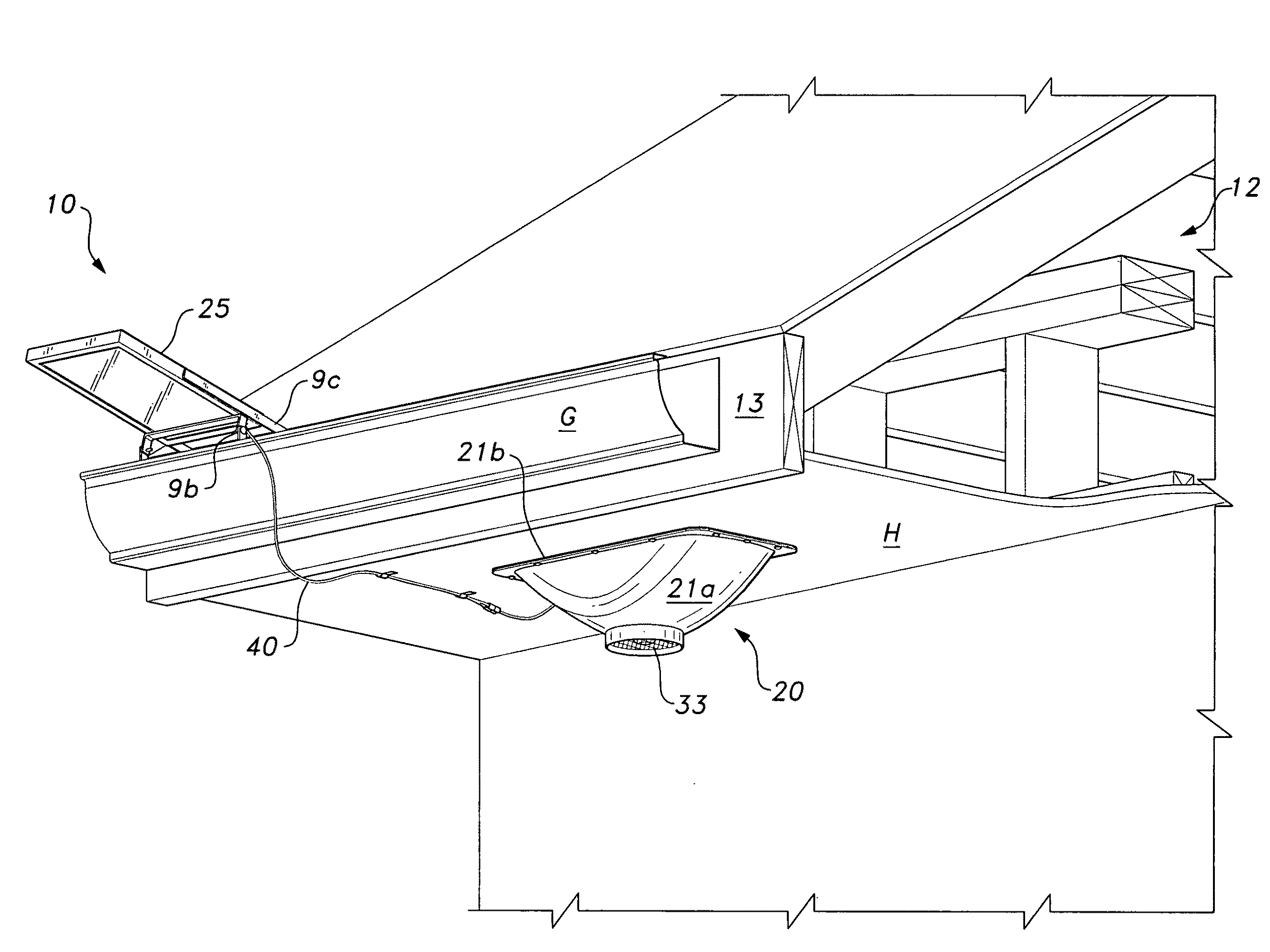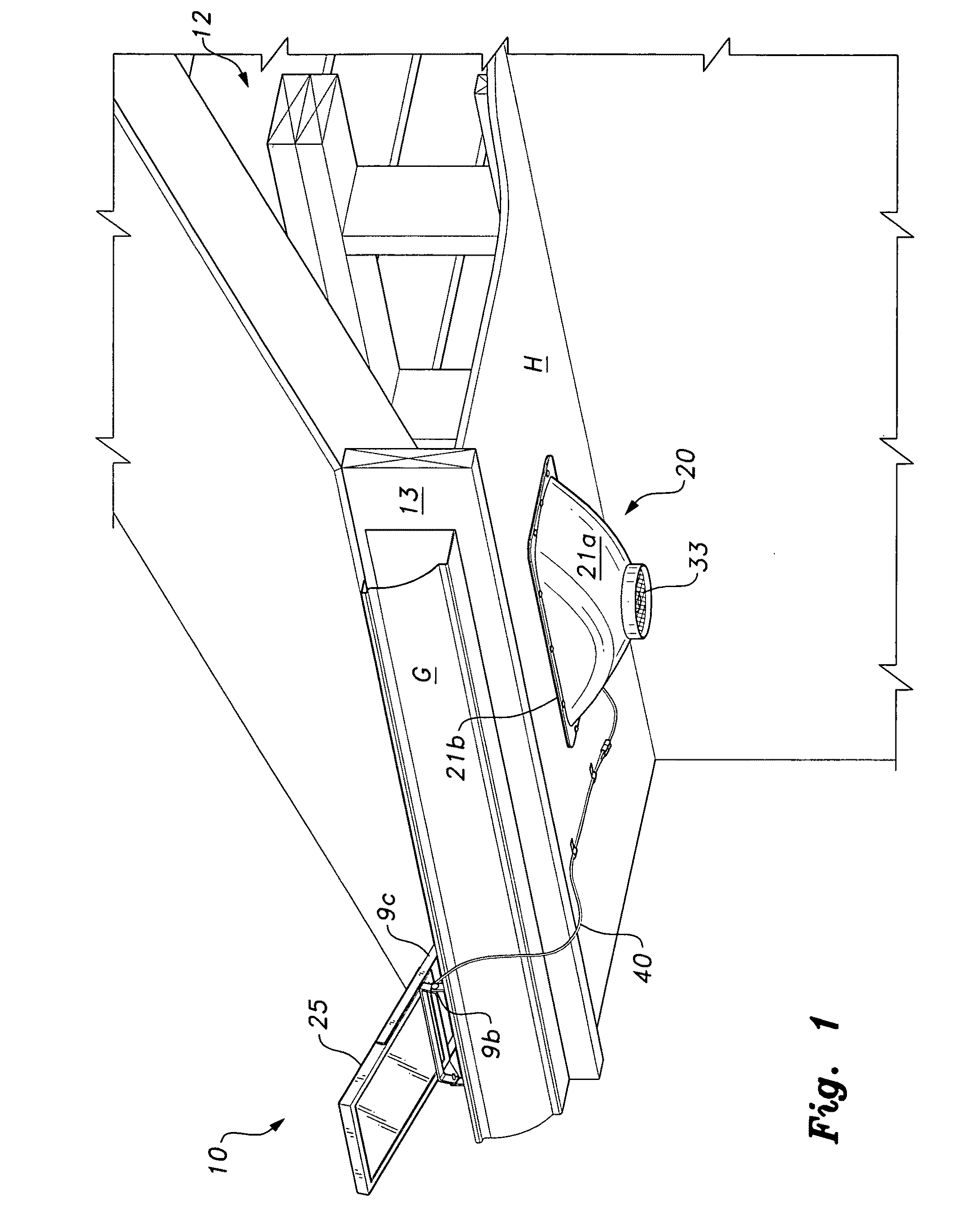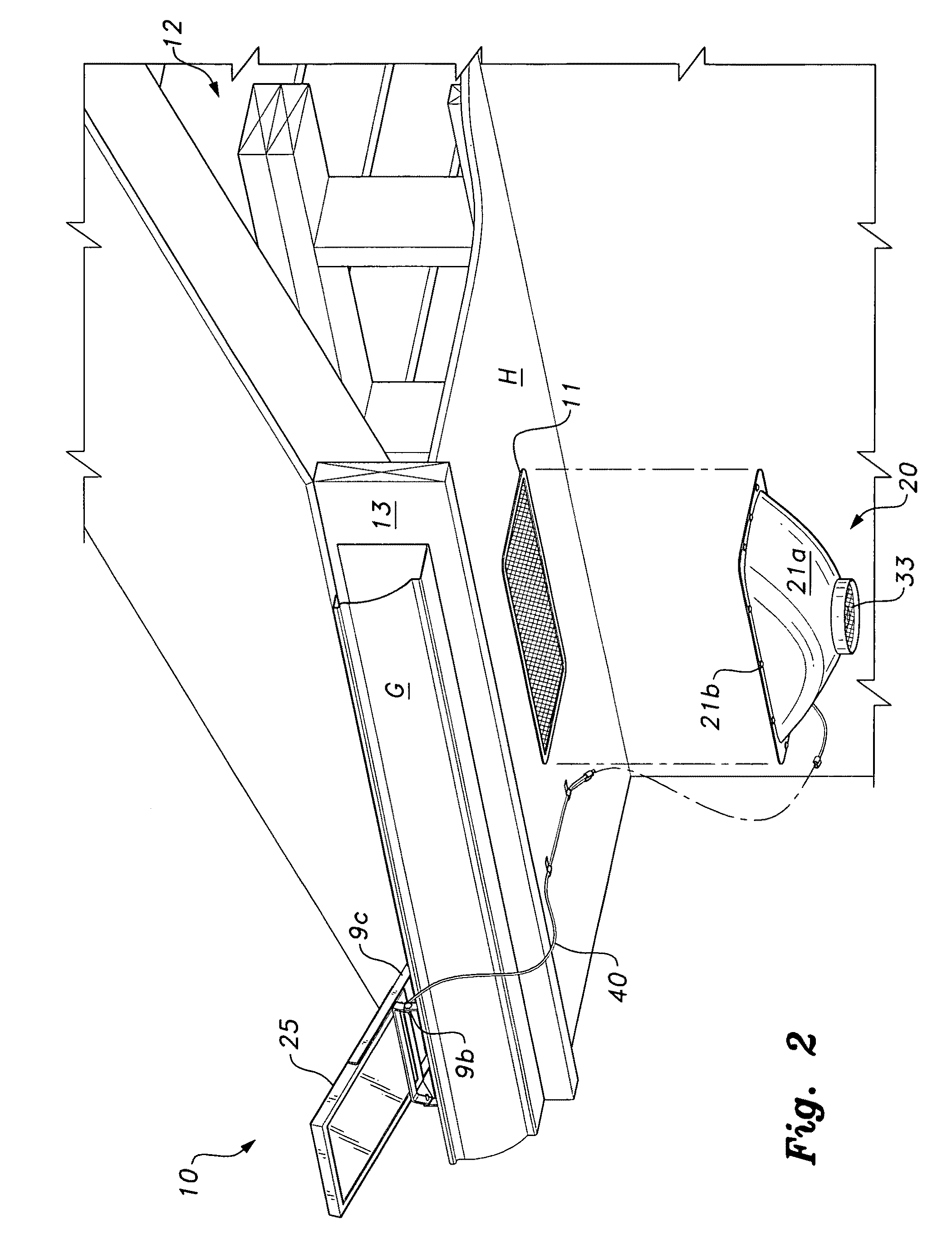Solar-powered soffit fan
a solar-powered soffit fan and fan body technology, which is applied in the direction of ventilation systems, heating types, piston pumps, etc., can solve the problems of air becoming more humid, surface dampness, and ineffective
- Summary
- Abstract
- Description
- Claims
- Application Information
AI Technical Summary
Benefits of technology
Problems solved by technology
Method used
Image
Examples
Embodiment Construction
[0021]As shown in FIGS. 1, 2, 4 and 6, the solar-powered soffit fan, designated generally as 10 in the drawings, includes an electric fan 20 which can be surface, flush or insert mounted over a soffit vent 11 that has free air access to the attic 12 of a house H or other type of building. At least one photovoltaic solar panel 25 mounted on the building structure, e.g., roof-mounted, and aimed at the sun delivers power via a power cable 40 to the soffit fan 20. During daylight hours the photovoltaic solar panel 25 provides sufficient electrical power to activate the soffit fan 20, which provides forced attic ventilation through the soffit vent 11. At night the fan 20 automatically powers down when sunlight no longer impinges the solar panel 25. As shown in FIG. 6, a thermostat 30 and / or humistat 35 can be included for additional control of the fan 20.
[0022]An optional charge-control device 78 and battery B can be added for operations into nighttime, or when there is insufficient sunl...
PUM
 Login to View More
Login to View More Abstract
Description
Claims
Application Information
 Login to View More
Login to View More - R&D
- Intellectual Property
- Life Sciences
- Materials
- Tech Scout
- Unparalleled Data Quality
- Higher Quality Content
- 60% Fewer Hallucinations
Browse by: Latest US Patents, China's latest patents, Technical Efficacy Thesaurus, Application Domain, Technology Topic, Popular Technical Reports.
© 2025 PatSnap. All rights reserved.Legal|Privacy policy|Modern Slavery Act Transparency Statement|Sitemap|About US| Contact US: help@patsnap.com



